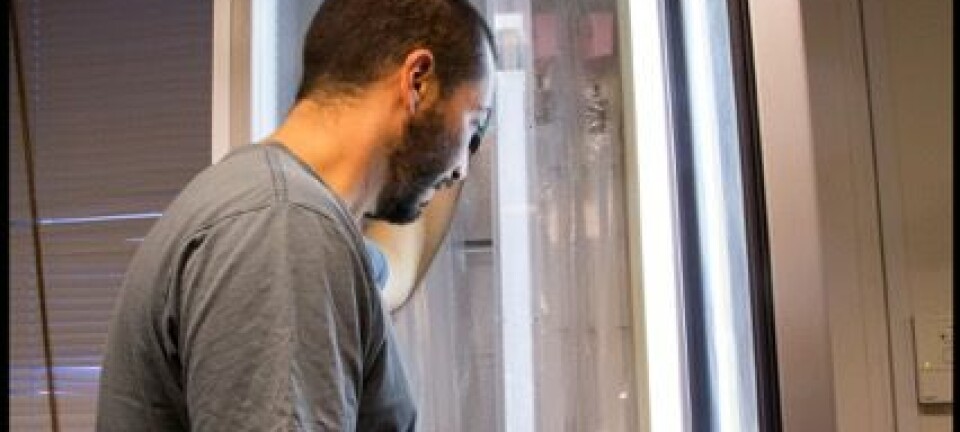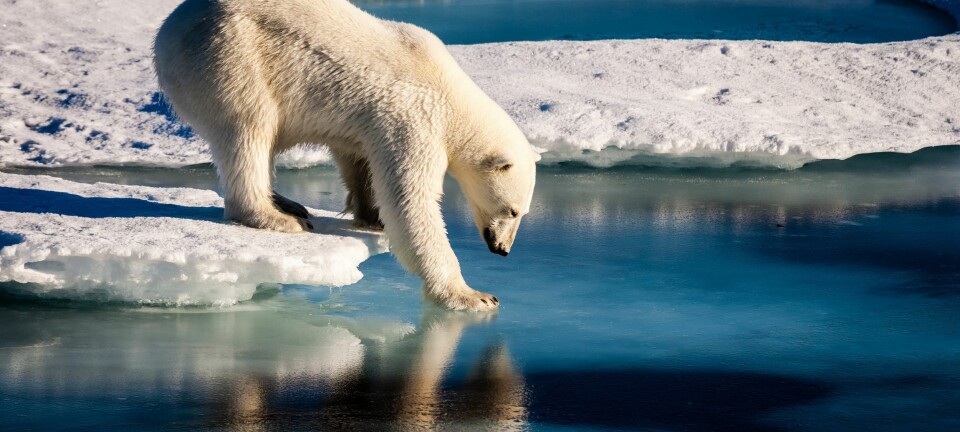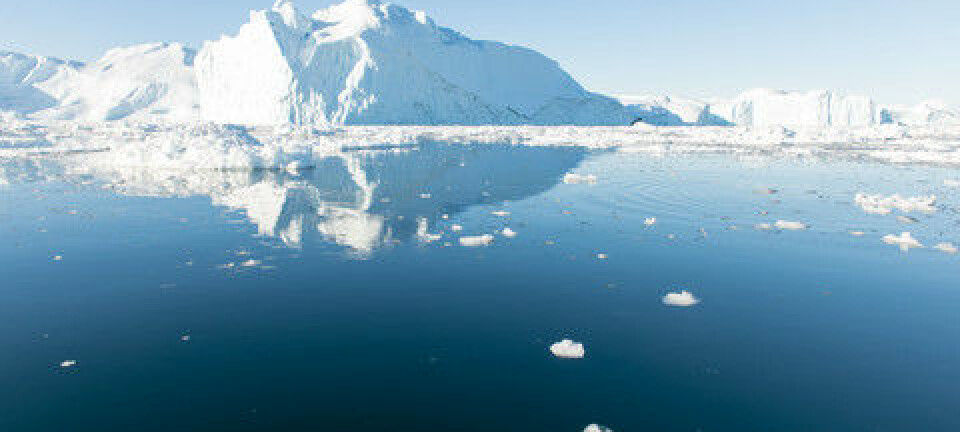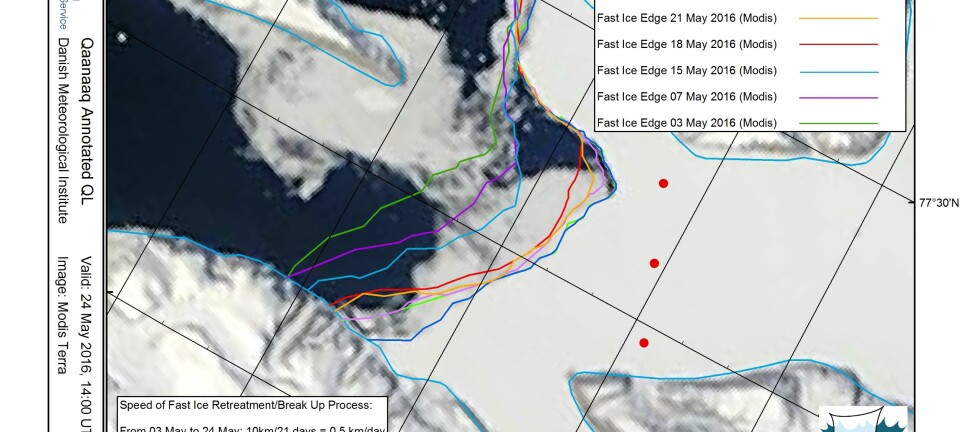
Climate change boosts algae growth in the Arctic
Microscopic algae living underneath sea ice are an essential source of food in the Arctic ocean. But do we really know how little light they need to survive?
It is pitch dark all winter in the Arctic. And even when the spring sun finally appears in the sky, the compact layer of ice and snow that rests at the surface of the sea prevents sunlight from reaching the ocean below.
Among Arctic scientists the general view is that ice algae do not obtain sufficient light for growth when more than 30-50 centimetres of snow covers the ice.
Thus, when we arrived at the very north-eastern corner of Greenland in April to study microalgae photosynthesis and found more than one meter of snow covering more than one meter thick sea ice, we thought that no algae could possibly grow under such conditions. But we were surprised.
Read More: When will the Arctic be ice free?
Ice algae are the keystone to the Arctic food web
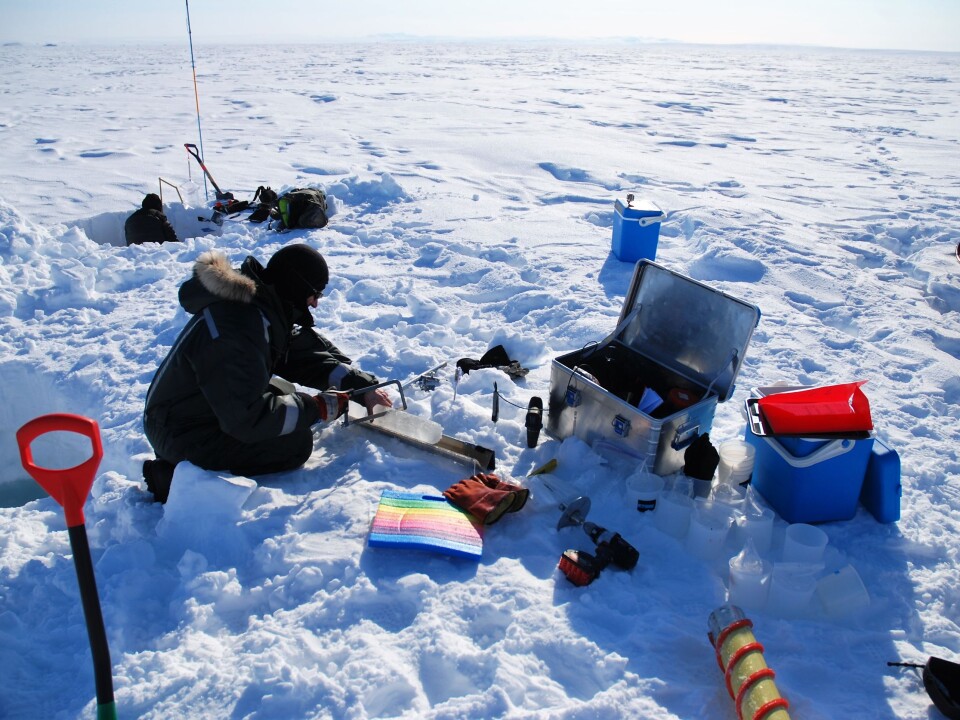
Beneath the more than two meters of snow and ice covering the ocean we discovered a small number of microscopic algae that had adapted to these extreme conditions.
Among them we found diatoms and picoalgae that reside on the sea ice and in small channels in the ice, which demonstrated that even in these dark and cold waters, they could harvest enough sunlight to drive photosynthesis and grow.
These algae were growing at an extreme low level of light, less than 0.17 μmol photons m-2 s-1, which is just 0.02 per cent of the light at the surface. This is the lowest light level ever recorded for active photosynthesis and growth of ice algae.
In fact, we saw a rapid growth of ice algae biomass despite these extremely thick layers of snow and ice and weak light. Moreover, the algae grew far earlier in the year than we expected.

This matters, because ice algae are the keystone species in the Arctic food web, as they are food for zooplankton and amphipods that are eaten by small fish, like the polar cod, which are again eaten by birds, seals, and whales. On top of the Arctic food web are Polar bears.
So more ice algae means more food to support the entire Arctic food web.
Read More: New report: how the Arctic will look in 30 years
Traversing sea ice in the high Arctic
The research was carried out at the newly established Villum Research Station at Station Nord in North-east Greenland as part of a large international research expedition coordinated by the Arctic Research Centre at Aarhus University, Denmark, and the Arctic-Science-Partnership (ASP), and published in the Journal of Geophysical Research.
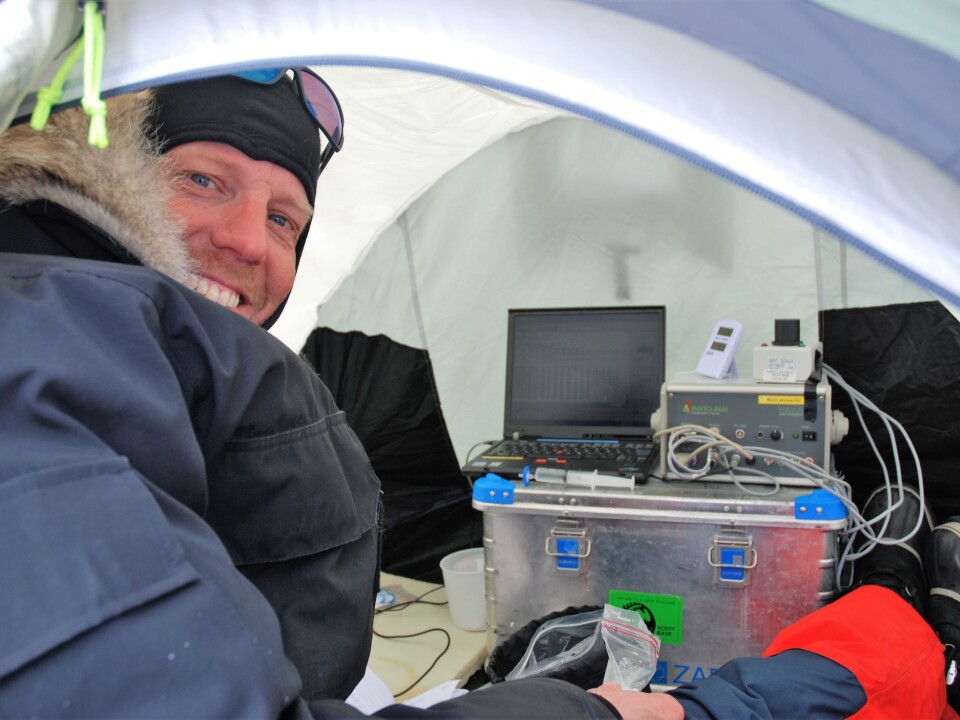
The expedition was the first of its kind to study ocean life and processes on fjord ice in this region of the Arctic. Sea ice covers the fjords of NE Greenland for more than 10 months of the year and the region remains largely understudied. The area is a known breeding ground for polar bears, and is likely to be impacted noticeably by global climatic changes.
We set out on snow-mobiles to reach previously unvisited areas of sea ice, and collected algae from the underside of the ice using special ice-core drills. You can watch us as we traverse the ice and collect samples in the video below.
Read More: Arctic sea ice is approaching the limit of natural variability
Warmer snow allows more light to pass through
Back in the laboratory, we used sensitive instruments to measure the number of microscopic algae and their photosynthetic activities. At the start of the expedition we didn’t dare hope to find any algae activity, and expected to find very little life in the sea ice at all. But our sensitive laboratory analyses proved us all wrong.
We combined our field data with data from a temporary weather station at our sampling location, which collected information about air-, snow- and ice- temperature, snow cover, and incoming light intensity.
And we teamed up with a group of British scientists who are experts in the optical properties of snow and ice to understand what was going on. Just how did these algae survive with no light, or if a little light came through to the ice algae, how did this happen?
We saw that when the snow became warmer, its optical conditions changed, allowing a larger amount of light to reach the underside of the sea ice, hereby boosting the growth of the ice algae. It is generally the thickness of the snow pack that governs the light intensity below the ice, but here we had discovered a new mechanism. It was a breakthrough discovery!
Read More: Arctic sea ice at a record low
What does this all mean?
Our new measurements change our view on how much light is required to sustain life in the ocean and show that ice algae can utilise much weaker light levels than hitherto assumed.
Our results might also explain a number of scientific observations made during recent years of large algae blooms underneath the ice, across the entire Arctic ocean. Combined with thinning sea ice cover, we expect that warming of the Arctic will accelerate the spring bloom, providing a vital food source for the Arctic food web.
As the Arctic continues to warm we can expect that even more light will reach beneath the ice, boosting algae growth and kicking-off their spring bloom. Considering how quickly the Arctic is warming, this has big implications for Arctic ecosystems as more food becomes available earlier in the year to sustain the entire Arctic food web.
The authors transport their equipment to the sea ice using snow mobiles. (Video: kasper Hancke)
---------------
Read this article in Danish at ForskerZonen, part of Videnskab.dk
